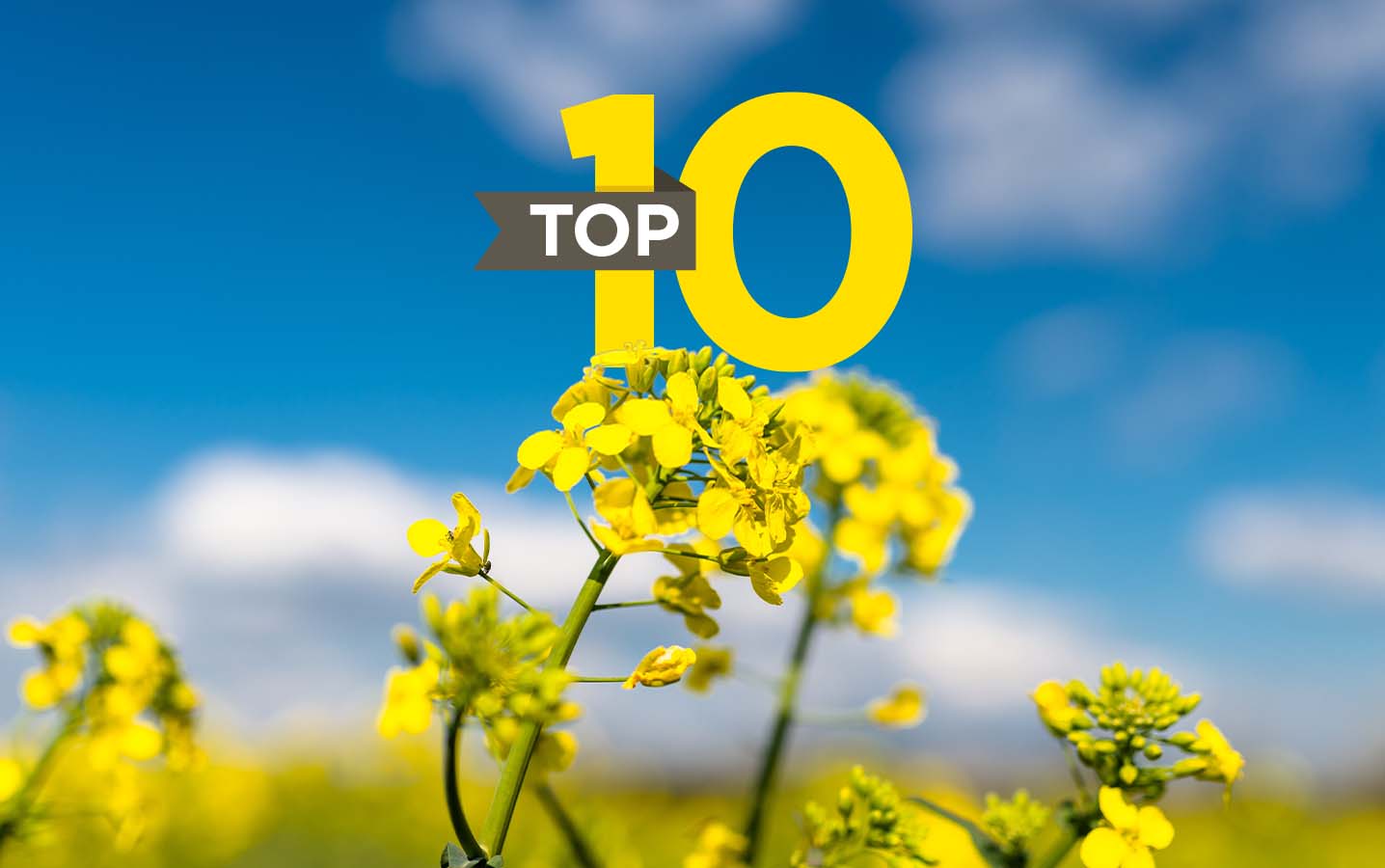Canola Encyclopedia Top Ten: Topics for 2021
1. Growth stages
The Growth Stages chapter is always popular. It describes all stages of canola plant development from germination to senescence.
2. Flea beetles
Warm, dry conditions during canola establishment made it a busy year for flea beetles. One online commenter called the Flea Beetles chapter “extremely helpful!” Page views picked up from mid-May to mid-June and peaked on June 3 – likely in response to the June 2 Canola Watch, which had a flea beetles quiz and links to the Canola Encyclopedia chapter.
3. Cutworms
Clicks for cutworms increased significantly from the end of May and into July this year, which is peak season for damaging larvae to be feeding on canola. I know this because the chapter now features a new cutworm lifecycle graphic, which neatly compares larval feeding times for redbacked, dingy and pale western cutworms.
4. History of canola seed development
This chapter sees steady traffic throughout the entire year since it offers more historical factoids than agronomy advice. It explores the Brassica species and canola fatty acid profiles, making it a valuable resource for researchers, students, growers and anyone else who finds themselves canola curious.
5. Clubroot
This is a dense chapter, with nine sections that cover everything from clubroot prevention to management and ongoing research. Visitors can use the new “Jump to section” feature to navigate with ease and speed. The Clubroot chapter peaked this fall when we added a new Clubroot Management factsheet, which highlights the importance of using CR cultivars early to keep spores low.
6. Lygus bugs
Due to this summer’s extremely dry conditions, canola was at a higher risk of lygus damage and outbreaks were reported across the Prairies. Our data shows a considerable spike in traffic to the Lygus Bugs chapter for the months of July and August, with folks searching Google for information on new thresholds, damage and lifecycle.
7. Sclerotinia stem rot
Traffic to the Sclerotinia chapter spiked early July, during canola’s flowering stage when infection is most likely to occur. The chapter has valuable information on sclerotinia identification, best management practices and a new disease cycle infographic. Canola Watch had timely recommendations on June 30 and a sclerotinia quiz on July 7, both of which drove page view spikes.
8. Weed management
When to spray canola? Tips for canola herbicides? Common weeds in canola? Agronomists can find answers to these questions and more in the Weed Management chapter. This chapter received steady traffic for most of the growing season, peaking early June with the release of a Weed Management quiz in Canola Watch. The chapter is riddled with charts, graphs and videos to visually support its detailed instructions.
9. Blackleg
The Blackleg chapter saw steady traffic throughout all of 2021 as agronomists prepared for the growing season and the website installed new resources like the Blackleg Yield Loss Calculator, and the Blackleg Management Guide, posted in March.
10. Time of seeding
This section of the Plant Establishment chapter has everything you need to make decisions on canola seeding timing, from cool temperature considerations to tips for late-seeded canola. Traffic spiked on April 14 this year thanks to Canola Watch articles on early seeding and spring prep jobs.





